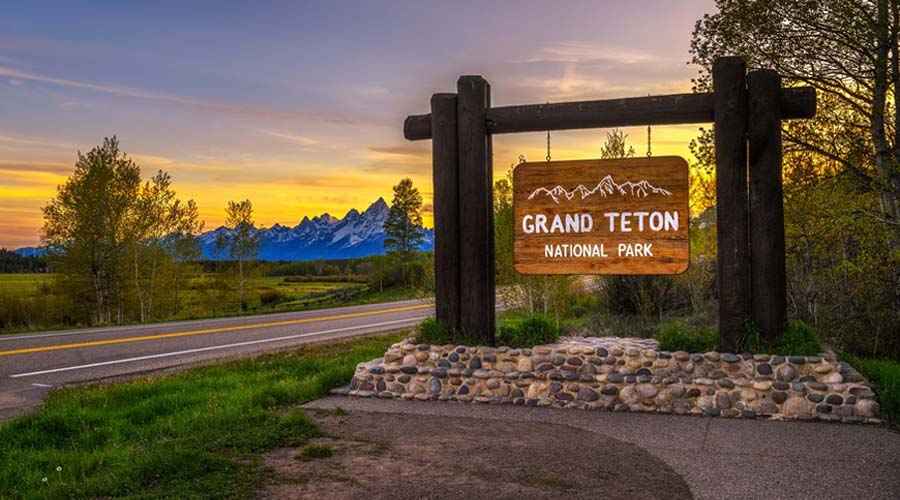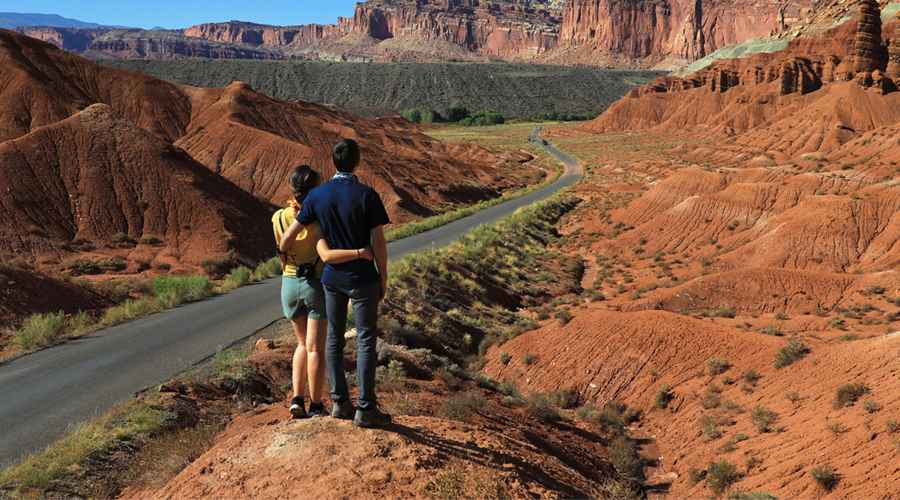Nestled in northwestern Wyoming, Grand Teton National Park is a stunning landscape of rugged mountains, pristine lakes, and abundant wildlife. Known for its dramatic peaks that rise almost abruptly from the valley floor, the park offers visitors a chance to experience one of the most awe-inspiring natural settings in the United States. Established in 1929 and later expanded, Grand Teton National Park today encompasses over 310,000 acres of protected wilderness. It is not only a haven for outdoor recreation but also a sanctuary for ecosystems that have remained relatively unchanged for centuries.
The Striking Landscape
The heart of the park is the Teton Range, a 40-mile-long mountain chain that includes some of the most recognizable peaks in the country. The Grand Teton, standing at 13,775 feet, dominates the skyline and has long been a magnet for climbers and adventurers. Unlike many other mountain ranges that rise gradually, the Tetons soar almost vertically from the valley, creating a breathtaking contrast with the flat expanse of Jackson Hole below.
Glaciers carved much of the park’s landscape thousands of years ago, leaving behind U-shaped valleys, sharp ridges, and glacial lakes. Today, shimmering waters like Jenny Lake, Jackson Lake, and Leigh Lake reflect the jagged peaks and offer peaceful spots for boating, fishing, or simply soaking in the scenery. The Snake River, winding its way through the valley, adds another dimension to the park’s beauty and provides opportunities for rafting and wildlife viewing.
Rich Wildlife and Ecosystems
Grand Teton National Park is part of the Greater Yellowstone Ecosystem, one of the largest nearly intact temperate ecosystems in the world. The park protects a diverse array of habitats, from alpine tundra to lush meadows, which support an incredible variety of plants and animals.
Visitors may encounter large mammals such as elk, moose, mule deer, and bison grazing in the open meadows. Predators like grizzly bears, black bears, and wolves also roam the park, playing a vital role in maintaining the ecological balance. Bird enthusiasts will be delighted by the presence of bald eagles, trumpeter swans, ospreys, and countless migratory species. The wetlands and rivers support thriving populations of fish, making the park a popular destination for anglers.
Because of this ecological richness, Grand Teton is not just a recreational playground but also a living laboratory for scientists studying wildlife, climate change, and natural processes.
A Playground for Outdoor Enthusiasts
Grand Teton National Park is a paradise for outdoor recreation. Hiking is one of the most popular activities, with more than 200 miles of trails winding through forests, meadows, and mountain passes. For those seeking a casual stroll, the trails around Jenny Lake offer gentle walks with spectacular views. Adventurers looking for a challenge can tackle multi-day backcountry treks or even attempt a climb up the Grand Teton itself, a feat that requires technical skill and preparation.
Water-based activities are equally rewarding. Kayaking or canoeing on Jackson Lake provides a unique perspective of the towering peaks, while guided rafting trips on the Snake River combine excitement with unparalleled wildlife viewing. In winter, the park transforms into a wonderland of snowshoeing and cross-country skiing opportunities, with far fewer visitors and a serene silence blanketing the valleys.
Camping is another cherished experience in the park. Whether in developed campgrounds or backcountry sites, spending the night under the starry Wyoming sky offers a connection to nature that is hard to replicate.
Human History and Cultural Heritage
Long before it became a national park, the Teton region was home to Native American tribes, including the Shoshone, Bannock, and Crow. They hunted, fished, and traveled through the valleys, leaving behind evidence of their presence in the form of tools, arrowheads, and cultural traditions.
In the 19th century, fur trappers and traders arrived, followed by homesteaders and ranchers. The rugged landscape presented challenges, but the valley became known for its cattle ranching and later attracted artists, photographers, and conservationists inspired by its raw beauty. John D. Rockefeller Jr. played a pivotal role in preserving the land, quietly buying up large tracts of property and later donating them to the federal government. His efforts, along with the push from conservationists, helped expand the park to its current size.
Today, visitors can still glimpse the human history of the region by exploring preserved ranches and historic sites within the park.
Conservation and Challenges
Like many protected areas, Grand Teton faces challenges from climate change, development pressures, and increasing visitation. Melting glaciers, shifts in wildlife migration patterns, and wildfires all impact the delicate balance of the ecosystem. Park managers and scientists are working to monitor these changes and develop strategies to safeguard the park for future generations.
Responsible tourism plays a major role in conservation. Visitors are encouraged to follow Leave No Trace principles, respect wildlife, and tread lightly on the land. By doing so, they contribute to the long-term preservation of this natural treasure.
Why Grand Teton Matters
Grand Teton National Park stands as more than just a scenic destination—it is a reminder of the importance of protecting wild places. Its towering peaks inspire awe, its valleys shelter diverse wildlife, and its rivers sustain life in the region. For millions of visitors each year, the park provides a sense of wonder, adventure, and renewal.
In a rapidly changing world, places like Grand Teton serve as sanctuaries where people can reconnect with nature and reflect on humanity’s responsibility to the environment. Whether you come for the thrill of a mountain climb, the peace of a lakeside sunrise, or the chance to spot a moose in its natural habitat, the experience leaves a lasting imprint.


